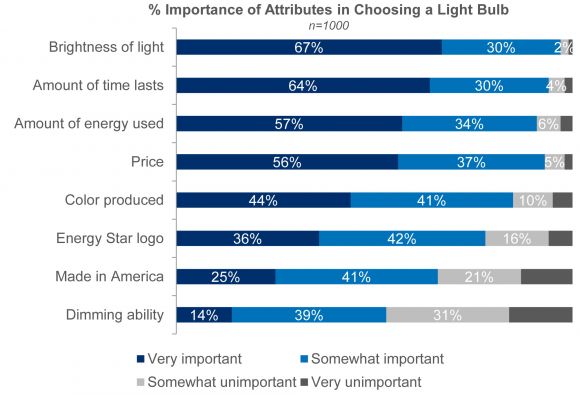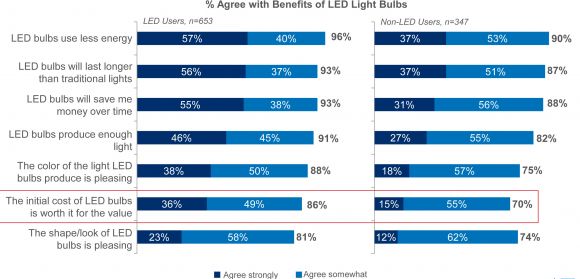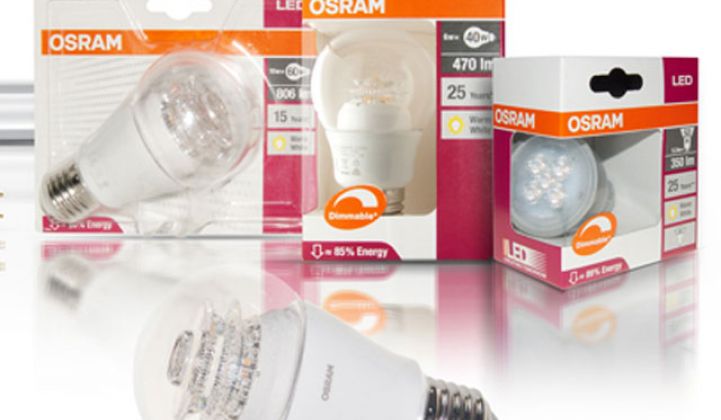Two-thirds of Americans have purchased LEDs for their homes, nearly double the figure from just two years ago.
The changing landscape of LED adoption is obvious not just in the prices on the store shelves, but also in shifting consumer perceptions, according to the seventh annual survey conducted by Osram Sylvania. More people were aware of the term "LED" than "halogen" or "CFL."

It’s not just for specific purchases like Christmas lights, either. Instead, consumers are buying solid-state lighting for general illumination in the home. Those who are making the switch from compact fluorescent lights and incandescents to LEDs are lured by the color of the bulb, low energy use and Energy Star approval.
The survey shows how quickly the tide is turning, but also highlights the fact that CFLs continue to dominate in terms of market share -- they were the most purchased bulb in the past 12 months. By next year, however, that could change.
More than half of the people surveyed said they purchased a CFL in the past year, but LEDs were close behind at 41 percent. The survey was conducted in February, before major brands rolled out LED bulbs that are now cheaper than CFLs.
But price is not the most important factor for consumers, the survey found. Most people are looking for brightness and longevity, areas in which LEDs often outperform CFLs. Among those who have not yet purchased an LED, however, there seems to be quite a bit of misinformation about the technology's qualities and characteristics.

The survey noted that in-store products and displays were the most important source of information for consumers. That means buyers need not only attractive packaging with the right information displayed in the right way, but also an attractive price point that involves instant utility rebates or everyday low prices. Only 18 percent of respondents said they go to their electric utility for information about light-bulb purchases.
The change could continue to come quickly, according to survey data. Consumers who have already purchased one LED will likely purchase another the next time they need a light, and those who are considering smart-home purchases are also more likely to buy LEDs than CFLs.
One area where price topped the list of concerns was connected lighting. In this domain, about two-thirds of consumers said that the price was the most important influence impacting their buying decisions. As prices have already started to come down in that market, functionality and lighting capability may soon become more important drivers.



